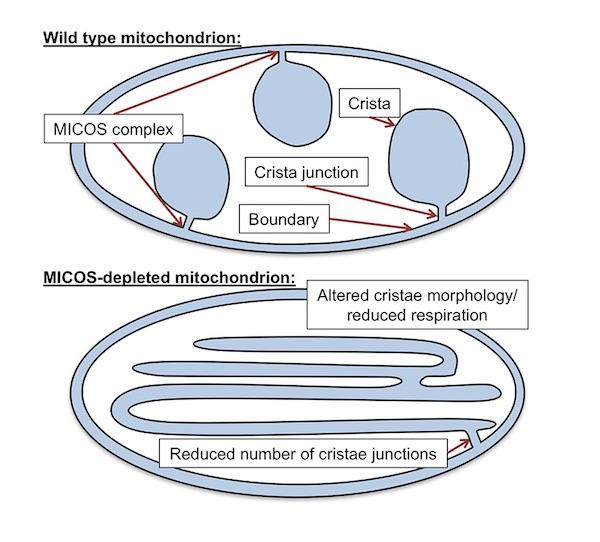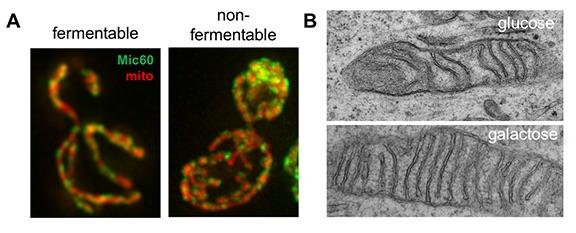

Our lab is interested in addressing a fundamental question of cell biology: How are organelles spatially organized? Mitochondria are especially fascinating to us because they perform a multitude of cellular functions that are dependent on the elaborate organization of their double membrane bilayer. In particular, mitochondrial energy production is directly linked to the shape of the organelle’s hallmark cristae membranes, which house the respiratory complexes that perform oxidative phosphorylation. In cells and tissues with high energy demand, such as in the heart, cristae number and density are greatly increased relative to cells in other tissues. Mitochondrial and cristae structures are disorganized in a wide range of disorders and diseases, including neurodegeneration, diabetes, and aged tissues. Despite the intimate connection between form and function, the molecular mechanisms that guide the number, position, and structure of cristae within mitochondria are largely unknown.
The MICOS complex is a highly conserved “master regulator” of mitochondrial structural organization. This complex localizes to cristae junctions, sites of cristae invagination to the interior of the organelle. MICOS is required for maintaining the correct number and distribution of cristae within mitochondria and its loss results in aberrant mitochondrial ultrastructure. However, the molecular role of MICOS and its subunits remain poorly understood. How does MICOS integrate with the numerous factors guiding mitochondrial organization such as respiratory complexes and phospholipids? How can the cell establish the complicated internal structure of mitochondria and dynamically modulate the organelle dependent on the diverse metabolic needs of different types of cells and tissues?
To address these and related questions, our lab takes a multidisciplinary approach combining fluorescence and electron microscopy, proteomics, biochemistry, systems biology, and genetics in both human tissue culture and yeast model systems.